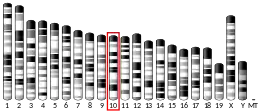| TAAR9 | |||||||||||||||||||||||||||||||||||||||||||||||||||
|---|---|---|---|---|---|---|---|---|---|---|---|---|---|---|---|---|---|---|---|---|---|---|---|---|---|---|---|---|---|---|---|---|---|---|---|---|---|---|---|---|---|---|---|---|---|---|---|---|---|---|---|
| Identifiers | |||||||||||||||||||||||||||||||||||||||||||||||||||
| Aliases | TAAR9, TA3, TAR3, TAR9, TRAR3, trace amine associated receptor 9 (gene/pseudogene), trace amine associated receptor 9 | ||||||||||||||||||||||||||||||||||||||||||||||||||
| External IDs | OMIM: 608282 MGI: 3527454 HomoloGene: 65286 GeneCards: TAAR9 | ||||||||||||||||||||||||||||||||||||||||||||||||||
| |||||||||||||||||||||||||||||||||||||||||||||||||||
| |||||||||||||||||||||||||||||||||||||||||||||||||||
| |||||||||||||||||||||||||||||||||||||||||||||||||||
| |||||||||||||||||||||||||||||||||||||||||||||||||||
| |||||||||||||||||||||||||||||||||||||||||||||||||||
| Wikidata | |||||||||||||||||||||||||||||||||||||||||||||||||||
| |||||||||||||||||||||||||||||||||||||||||||||||||||
Trace amine-associated receptor 9 is a protein that in humans is encoded by the TAAR9 gene.[5][6]
TAAR9 is a member of a large family of rhodopsin G protein–coupled receptors (GPCRs, or GPRs). GPCRs contain 7 transmembrane domains and transduce extracellular signals through heterotrimeric G proteins.[supplied by OMIM][6] N-Methyl piperidine is a ligand of TAAR9 associated with aversive behavior in mice. N,N-dimethylcyclohexylamine is an additional binding agonist that also activaes TAAR7 variants.[7][8]
TAAR9 gene deletion in rats leads to significantly decreased low-density lipoprotein cholesterol levels in the blood.[9]
See also
References
- 1 2 3 GRCh38: Ensembl release 89: ENSG00000237110 - Ensembl, May 2017
- 1 2 3 GRCm38: Ensembl release 89: ENSMUSG00000037424 - Ensembl, May 2017
- ↑ "Human PubMed Reference:". National Center for Biotechnology Information, U.S. National Library of Medicine.
- ↑ "Mouse PubMed Reference:". National Center for Biotechnology Information, U.S. National Library of Medicine.
- ↑ Lindemann L, Ebeling M, Kratochwil NA, Bunzow JR, Grandy DK, Hoener MC (March 2005). "Trace amine-associated receptors form structurally and functionally distinct subfamilies of novel G protein-coupled receptors". Genomics. 85 (3): 372–85. doi:10.1016/j.ygeno.2004.11.010. PMID 15718104.
- 1 2 "Entrez Gene: TAAR9 trace amine associated receptor 9".
- ↑ Ferrero DM, Wacker D, Roque MA, Baldwin MW, Stevens RC, Liberles SD (July 2012). "Agonists for 13 trace amine-associated receptors provide insight into the molecular basis of odor selectivity". ACS Chemical Biology. 7 (7): 1184–9. doi:10.1021/cb300111e. PMC 3401279. PMID 22545963.
- ↑ Liberles SD (October 2015). "Trace amine-associated receptors: ligands, neural circuits, and behaviors". Current Opinion in Neurobiology. 34: 1–7. doi:10.1016/j.conb.2015.01.001. PMC 4508243. PMID 25616211.
- ↑ Murtazina RZ, Zhukov IS, Korenkova OM, Popova EA, Kuvarzin SR, Efimova EV, et al. (March 2021). "Genetic Deletion of Trace-Amine Associated Receptor 9 (TAAR9) in Rats Leads to Decreased Blood Cholesterol Levels". International Journal of Molecular Sciences. 22 (6): 2942. doi:10.3390/ijms22062942. PMC 7998418. PMID 33799339.
Further reading
- Borowsky B, Adham N, Jones KA, Raddatz R, Artymyshyn R, Ogozalek KL, et al. (July 2001). "Trace amines: identification of a family of mammalian G protein-coupled receptors". Proceedings of the National Academy of Sciences of the United States of America. 98 (16): 8966–71. Bibcode:2001PNAS...98.8966B. doi:10.1073/pnas.151105198. PMC 55357. PMID 11459929.
- Vanti WB, Muglia P, Nguyen T, Cheng R, Kennedy JL, George SR, O'Dowd BF (November 2003). "Discovery of a null mutation in a human trace amine receptor gene". Genomics. 82 (5): 531–6. doi:10.1016/S0888-7543(03)00173-3. PMID 14559210.
This article incorporates text from the United States National Library of Medicine, which is in the public domain.
This article is issued from Wikipedia. The text is licensed under Creative Commons - Attribution - Sharealike. Additional terms may apply for the media files.



